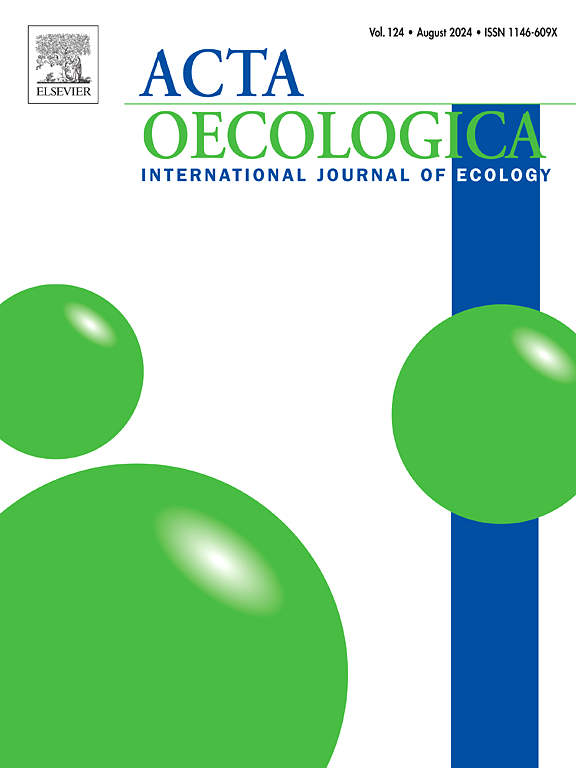Evaluation of secondary seed dispersal by dung beetles in a temperate region
IF 1.3
4区 环境科学与生态学
Q3 ECOLOGY
Acta Oecologica-International Journal of Ecology
Pub Date : 2025-10-01
DOI:10.1016/j.actao.2025.104129
引用次数: 0
Abstract
The survival of seeds dispersed by primary dispersers is determined by seed predation and secondary movement from deposition sites. The aim of this study was to clarify the role of dung beetles (Scarabaeidae) as secondary dispersers in northern Japan, with a focus on the burying ability of seeds within the feces of the sympatric primate Japanese macaque (Macaca fuscata) and its seasonal patterns. We conducted field and laboratory experiments to evaluate the seed-burial ability of dung beetles in parallel with investigations into the composition of seeds in dung and the capture of dung beetles. The experiments demonstrated that large tunnellers, mainly Phelotrupes spp. in summer and Copris spp. in fall, buried experimental seeds (plastic beads) at a depth of 0.5–5 cm regardless of size, implying that the buried seeds had a high probability of escaping predation and desiccation. Therefore, the large dung beetles at our study site seem to contribute more to secondary seed dispersal. We found that the percentage of seed-burying was greatest in summer when the abundance of Phelotrupes spp. was higher. This implied that secondary dispersal in the temperate region exhibited a clear seasonality originating from the life history of the dung beetles. The role of secondary dispersers in each season should be accurately evaluated to estimate seed dispersal effectiveness, especially in temperate regions where environmental seasonality is clear.
温带地区屎壳郎次生种子传播评价
由初级传播者传播的种子的存活取决于种子的捕食和从沉积地点的二次运动。本研究的目的是阐明屎壳郎(金龟子科)在日本北部作为次生传播者的作用,重点研究了同地灵长类动物日本猕猴(Macaca fuscata)粪便中的种子埋藏能力及其季节模式。我们通过实地和室内实验,评估了屎壳郎的埋种能力,同时调查了屎壳郎粪便中种子的组成和捕获情况。实验表明,大型隧道虫,主要是夏季的Phelotrupes类和秋季的Copris类,将实验种子(塑料珠)埋在0.5 ~ 5cm的深度,而不考虑种子的大小,这意味着埋下的种子有很高的逃脱捕食和干燥的可能性。因此,我们研究地点的大型蜣螂似乎对二次种子传播贡献更大。结果表明,埋种率在丰度较高的夏季最高。这表明,在温带地区的二次传播表现出明显的季节性,起源于蜣螂的生活史。应准确评价次生传播者在每个季节的作用,以估计种子传播效果,特别是在环境季节性明显的温带地区。
本文章由计算机程序翻译,如有差异,请以英文原文为准。
求助全文
约1分钟内获得全文
求助全文
来源期刊
CiteScore
3.60
自引率
0.00%
发文量
57
审稿时长
>0 weeks
期刊介绍:
Acta Oecologica is venue for the publication of original research articles in ecology. We encourage studies in all areas of ecology, including ecosystem ecology, community ecology, population ecology, conservation ecology and evolutionary ecology. There is no bias with respect to taxon, biome or geographic area. Both theoretical and empirical papers are welcome, but combinations are particularly sought. Priority is given to papers based on explicitly stated hypotheses. Acta Oecologica also accepts review papers.

 求助内容:
求助内容: 应助结果提醒方式:
应助结果提醒方式:


